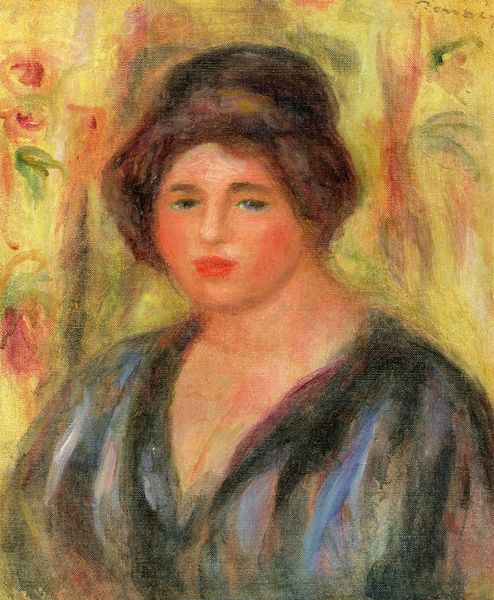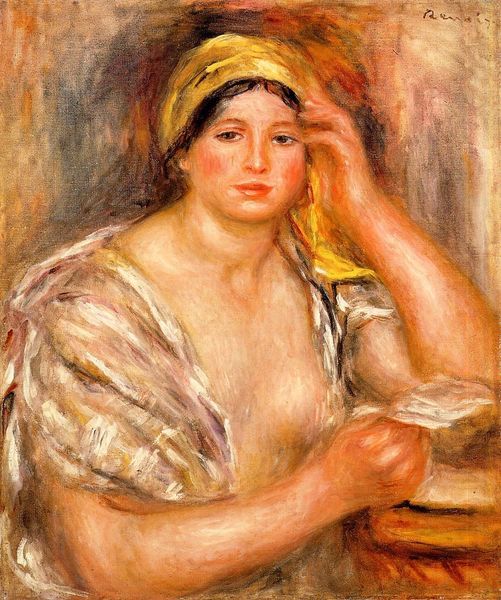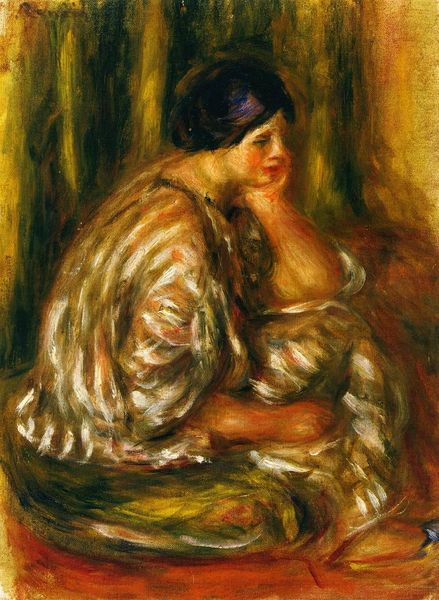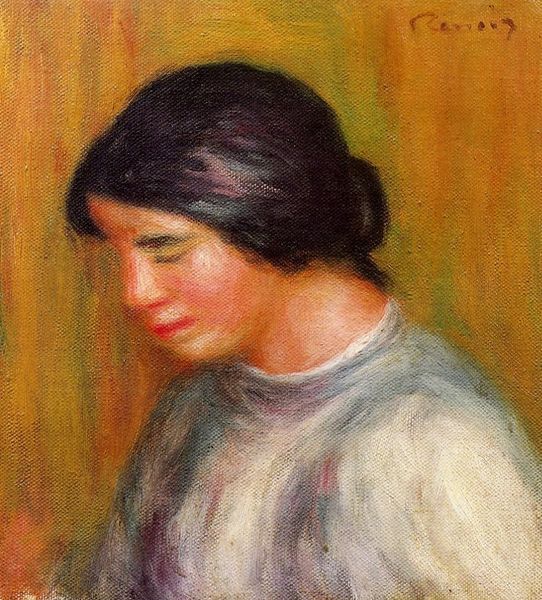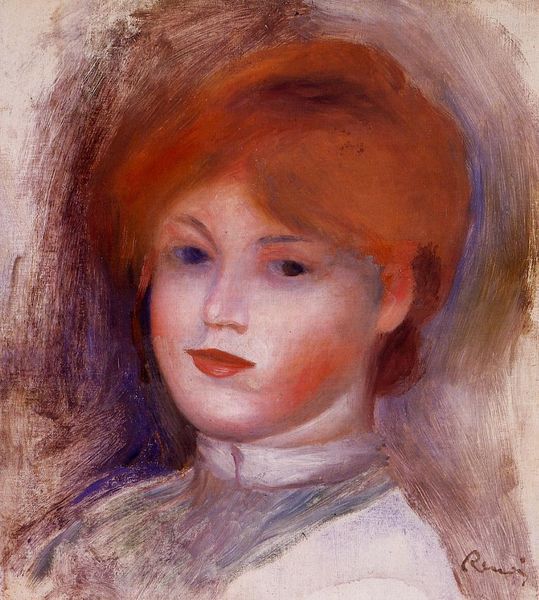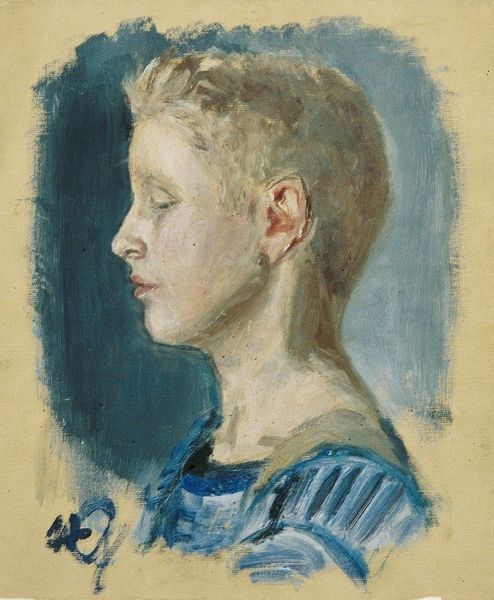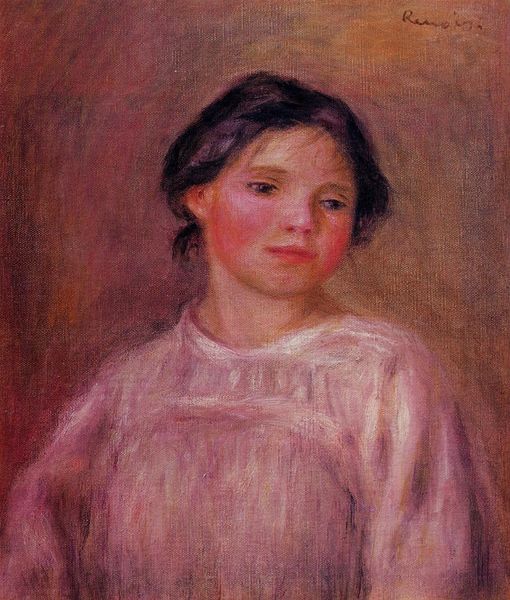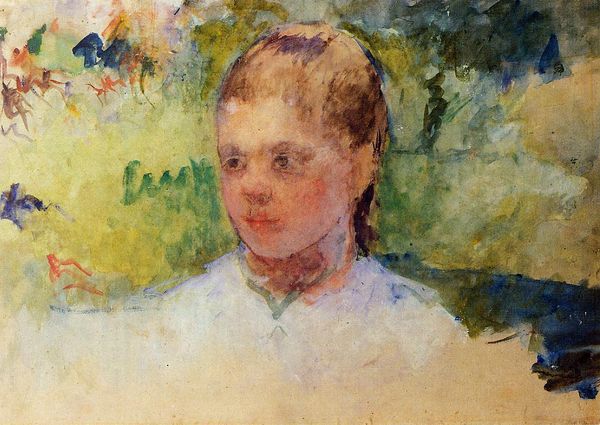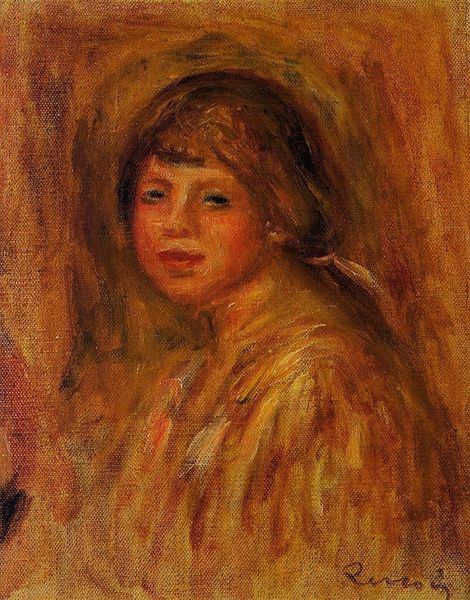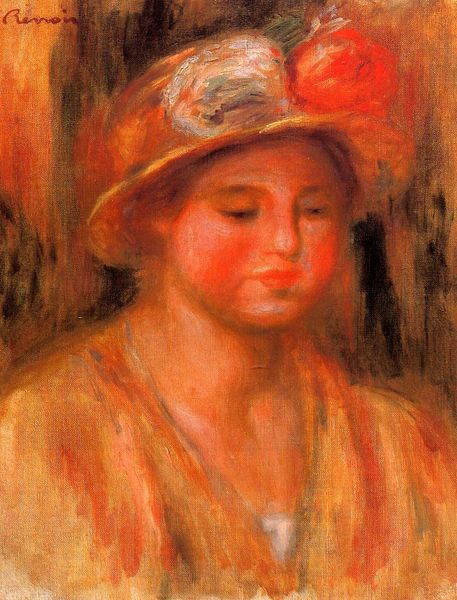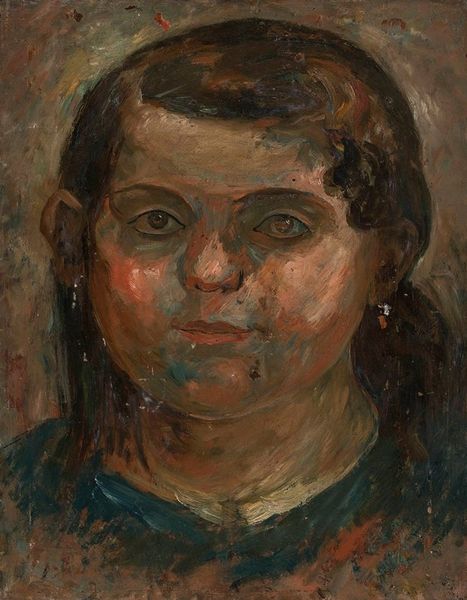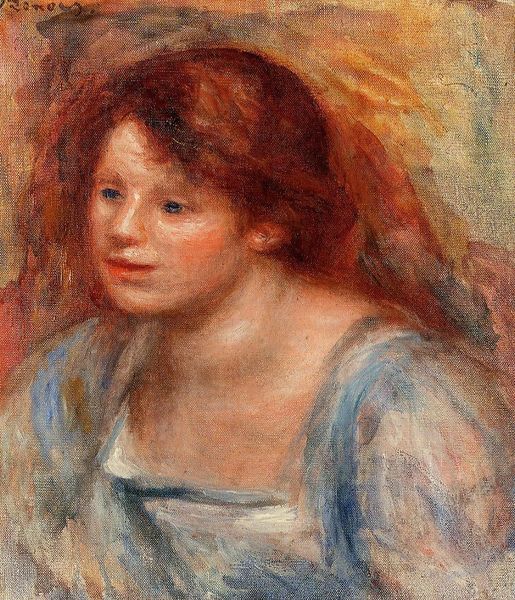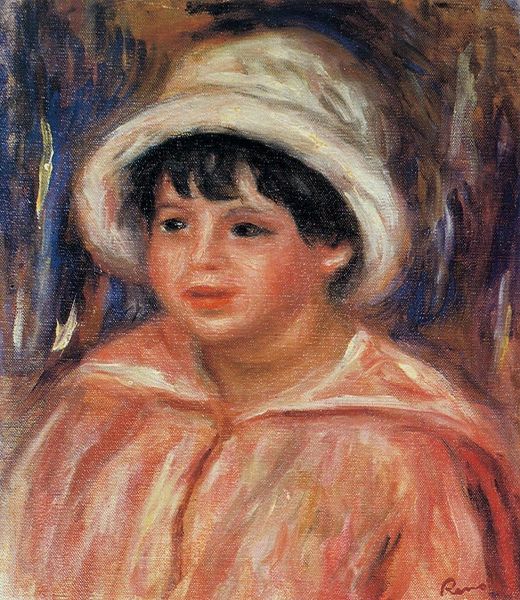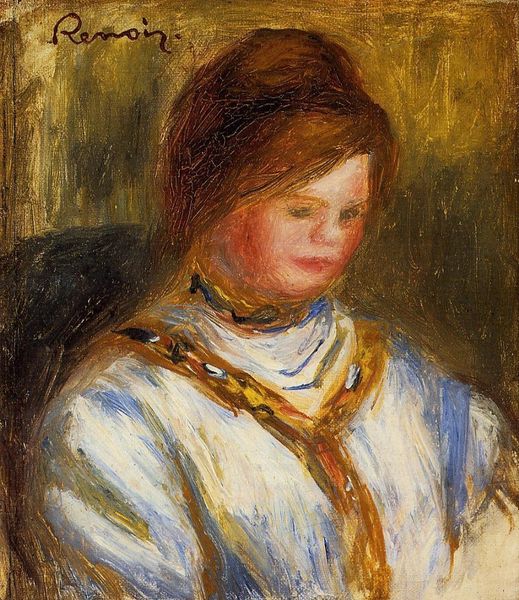
painting, oil-paint
#
portrait
#
painting
#
impressionism
#
oil-paint
#
oil painting
#
post-impressionism
Copyright: Public domain
Curator: The green background certainly jumps out. It creates an almost jarring contrast with the subject's skin tones. Editor: Indeed. We’re looking at Paul Gauguin’s "Head of a Breton (Marie Louarn)" from 1888. Gauguin employed oil paint on canvas, in his distinctly Post-Impressionist style. What strikes me first is its raw honesty. The heavy brushstrokes seem to reveal a direct encounter, an immediacy that many portraits lack. Curator: You’re drawn to the perceived “honesty.” I'm more interested in the application of the paint. Gauguin isn't trying to mimic reality, is he? He’s emphasizing the material, the flatness of the canvas. And note how the blue and violet clothing are defined. Gauguin isn't modeling so much as structuring with bold swaths of color. Editor: Precisely! The social context of his Brittany paintings is critical here. Gauguin sought authenticity outside of Paris, seeing Brittany as a space untouched by modern life, filled with tradition, yet that also feels deeply exploitative. These depictions were made for urban French viewers to find something of their lost folklore and culture and even religious expression within it. Curator: I see it slightly differently. It's his engagement with artisanal materials, like the humble oil paints available, combined with his interest in non-Western art, like Japanese prints, that helped him develop his own vision. That flattened space and color, for me, stems more from material interests than cultural nostalgia. Editor: But consider the title! It's "Head of a Breton." Why single out this woman’s ethnicity, her connection to this particular cultural heritage? Gauguin presented Brittany, and the Breton people, as something exotic to be consumed. His positioning shaped the image then, and it continues to influence how we interpret it today, in museums, galleries, and textbooks. Curator: A valid point, but I wonder if his process reveals more about the commodification inherent in painting itself? Even using the “head” like that turns the painting into a constructed object rather than the portrayal of something real. Editor: It is a haunting and challenging work, regardless. It certainly makes you think about the layers of meaning embedded within such a seemingly simple portrait. Curator: Agreed, it's far more complex than it appears at first glance.
Comments
No comments
Be the first to comment and join the conversation on the ultimate creative platform.
